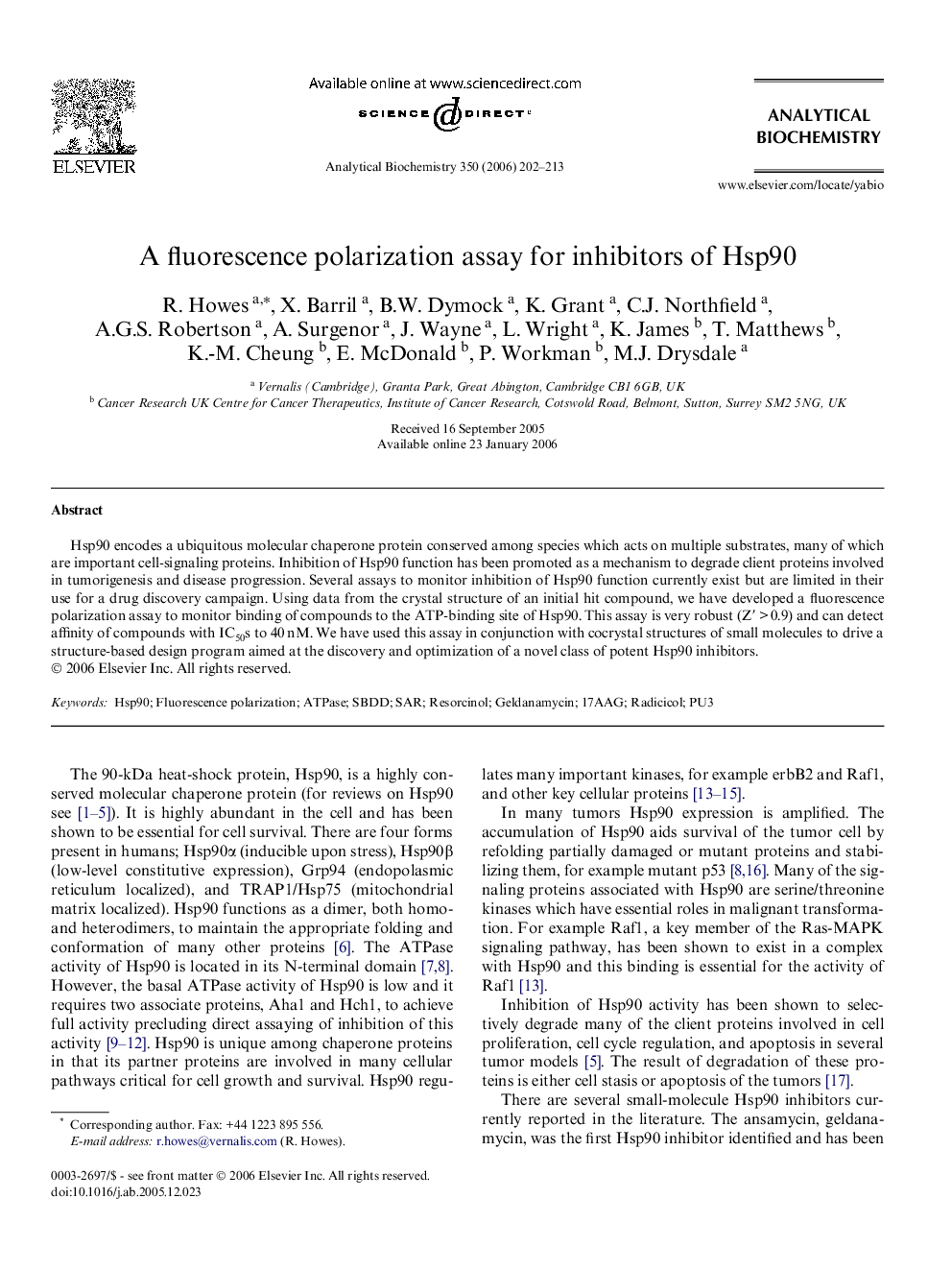| Article ID | Journal | Published Year | Pages | File Type |
|---|---|---|---|---|
| 1176131 | Analytical Biochemistry | 2006 | 12 Pages |
Hsp90 encodes a ubiquitous molecular chaperone protein conserved among species which acts on multiple substrates, many of which are important cell-signaling proteins. Inhibition of Hsp90 function has been promoted as a mechanism to degrade client proteins involved in tumorigenesis and disease progression. Several assays to monitor inhibition of Hsp90 function currently exist but are limited in their use for a drug discovery campaign. Using data from the crystal structure of an initial hit compound, we have developed a fluorescence polarization assay to monitor binding of compounds to the ATP-binding site of Hsp90. This assay is very robust (Z′ > 0.9) and can detect affinity of compounds with IC50s to 40 nM. We have used this assay in conjunction with cocrystal structures of small molecules to drive a structure-based design program aimed at the discovery and optimization of a novel class of potent Hsp90 inhibitors.
